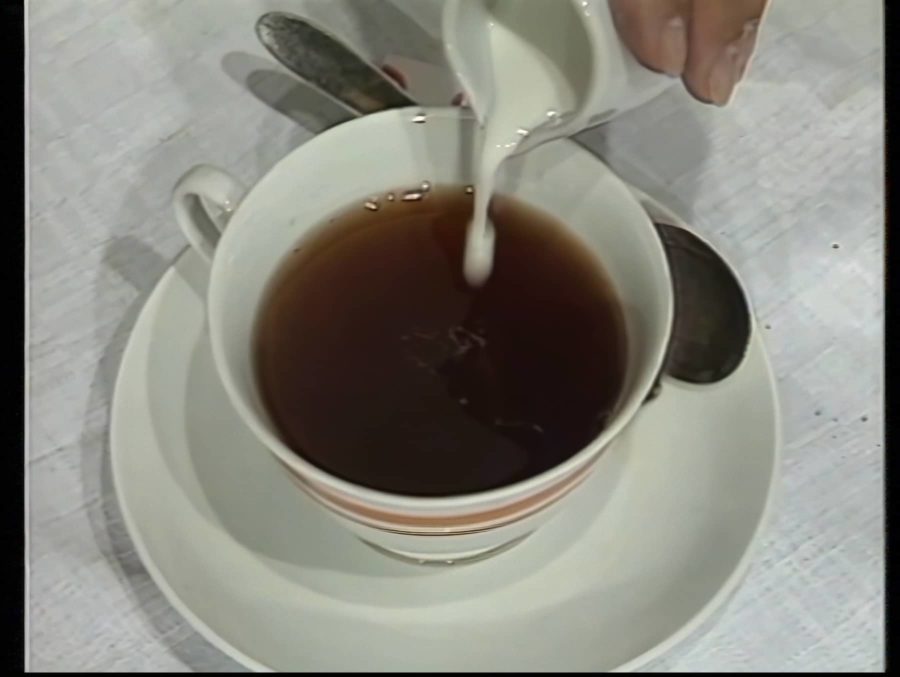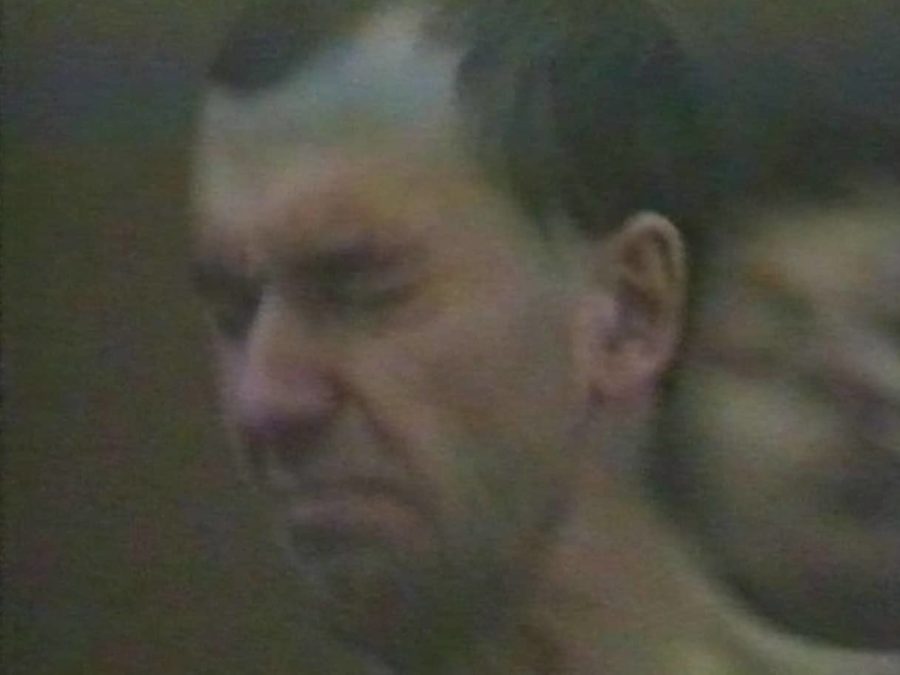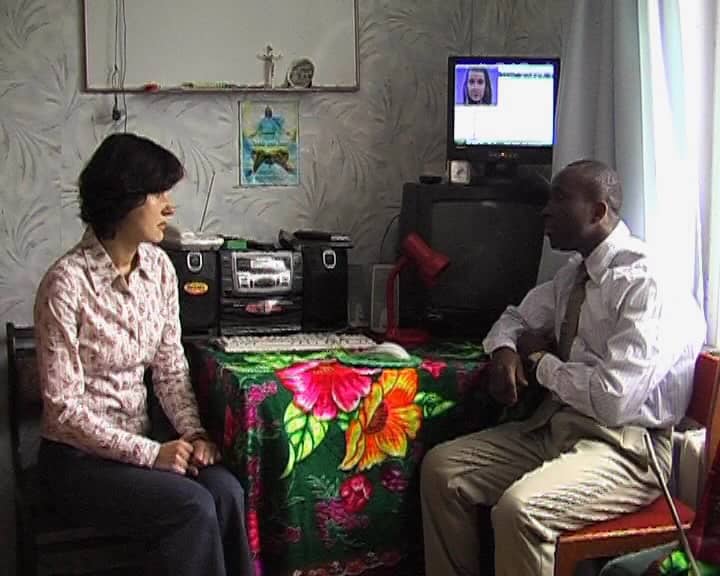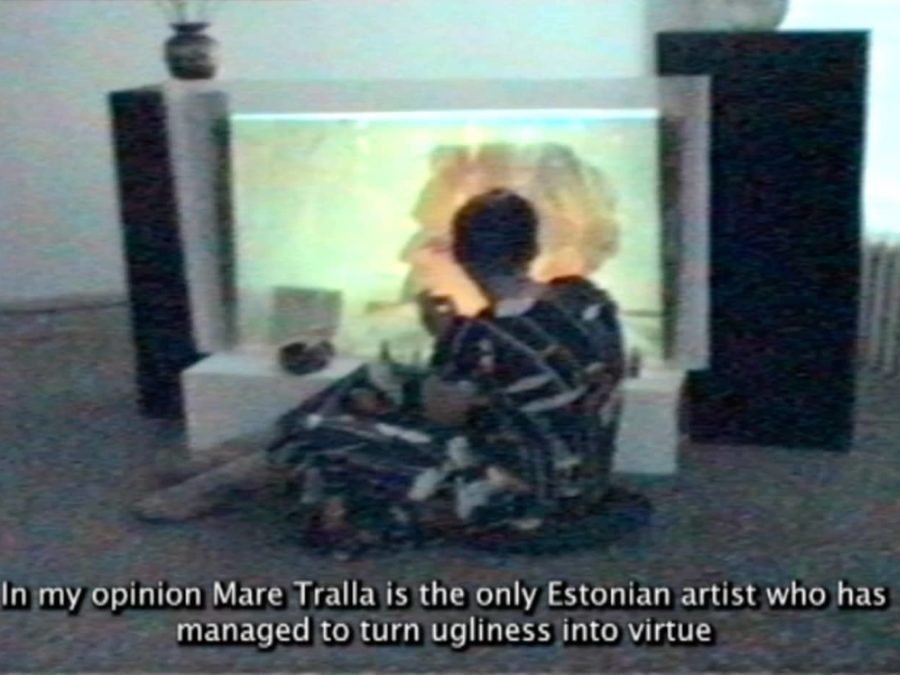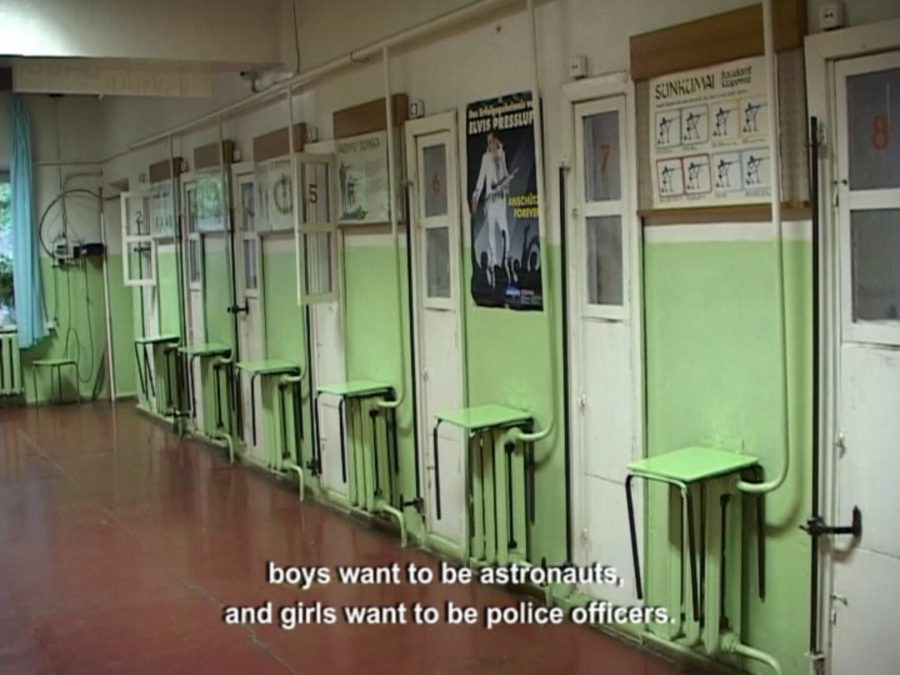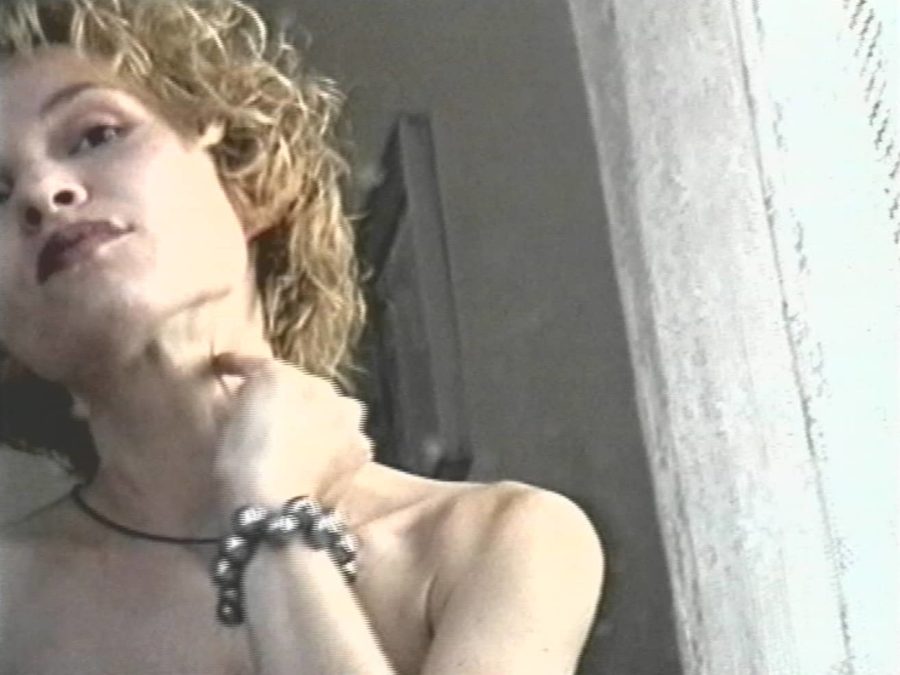Between 1973 and 1992, Croatian artists Sanja Iveković and Dalibor Martinis worked together sharing interest in social and political issues. By including the poetic lines from Okakura Kakuzō’s The Book of Tea and showing the tea-drinking “ceremony” accompanied by a working TV set and a conjugal quarrel, the video ridicules the Western iteration of the ritual.
The dramatic conflict between the two protagonists in their video is set against the background of other tensions: Orient and Occident, technology and tradition, contemplation and presentation, soul-searching and consumerism.
In the video work, only one conflict reaches its culmination: the tension between the two protagonists is resolved when the woman spills her tea on the man’s face. However, the violent scenes on the TV set do continue.
Sanja Iveković was born in Zagreb and belongs to the generation known as the Nova Umjetnička Praksa (eng. New Art Practice). During the Croatian Spring in the early 1970s, they were able to liberate themselves from the dominant constraints of academic art. She was the first female artist in former Yugoslavia to publicly profess feminism: she understood this as a gesture of disobedience against the communist regime. Iveković has had solo exhibitions at Calvert 22 and the South London Gallery (2012–2013), the Museum of Modern Art, New York (2011–2012), at the Van Abbe Museum, Eindhoven (2009) and the Muzeum Sztuki w Łodzi (2009), and was the winner of the Camera Austria Award in 2009. She also participated in documenta 8 (1987), documenta 11 (2002), documenta 12 (2007), and documenta 14 (2017).
Dalibor Martinis (*1947, Zagreb) is a transmedia artist and a video maker. He took part in international exhibitions, including Sao Paolo Biennale, documenta, Venice Biennale, and various film/video festivals. His videos and films have been broadcast by national televisions in Europe. He held numerous personal shows, performances and screenings. He was guest professor at Academy of Drama Arts/Zagreb, and Ontario College of Art/Toronto; he is Prof. Emeritus at University of Rijeka. His works are in the collections of The Museum of Modern Art/New York, Stedelijk Museum/Amsterdam, ZKM Karlsruhe, New York Public Library, The Museum of Contemporary Art/Zagreb, Kontakt/Erste Bank.
